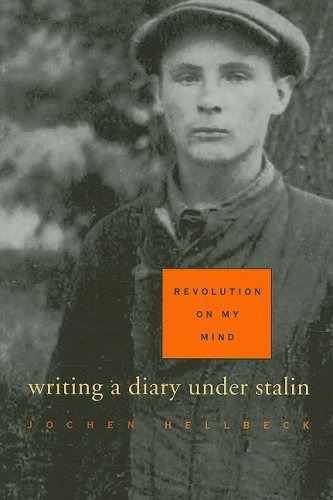Josephson, Paul, R. Red Atom: Russia’s Nuclear Power Program from Stalin to Today. New York, NY: W.H. Freeman, 2000.
Red Atom discusses how political and cultural ideologies shaped the rapid development of the Soviet Union’s nuclear power program and the drawbacks which it faced. The leading advocates of nuclear proliferation were central planners that had been schooled in the Stalin era, yet manifested an acute awareness of that period’s disasters. Josephson extends his analysis of the origins of the Soviet nuclear program to the current status of Russia’s nuclear state. He concludes that fusing a determinist ideology with an unknown, potentially hazardous energy source can produce catastrophic results for the culture, politics, and environment. Red Atom: Russia’s Nuclear Power Program from Stalin to Today is a relevant source because it explains both the original intentions and the unintended past and future consequences of Russia’s nuclear program.
Park, Chris C. Chernobyl: The Long Shadow. London; New York: Routledge, 1989.
Chernobyl: The Long Shadow discusses the disastrous environmental effects of the Chernobyl nuclear meltdown in 1986. Park discusses the long term impact the nuclear fallout has had on humans and the environment. Park explains the important lessons learned by the scientific and public policy community from Chernobyl on managing nuclear sites and disasters. This information is imperative when researching the topic of unintended repercussions from harnessing nuclear energy as it discusses health and radiation, nuclear containment, and human issues. This book offers an opportunity to assess historiographical debates regarding Chernobyl, through comparison with The Chernobyl Accident: A Comprehensive Risk Assessment. Both cover the backlash from the same incident, giving me an opportunity to better understand potential overlap or disagreements within the scholarship.
Poyarkov, Victor. The Chernobyl Accident: A Comprehensive Risk Assessment. Edited by George J. Vargo. Columbus, OH: Battelle Press, 2000.
The book revolves around the global environmental fallout that was the product of the Chernobyl nuclear accident. The goal of this book is to uncover the actual environmental drawbacks from the nuclear meltdown, and to dispel false common public preconceptions about environmental catastrophe. What is concluded in this book is that the best way to approach this accident is to carefully study the effects that Chernobyl had so we can advance our knowledge with dealing with nuclear waste and radiation protection. There are eight original authors, all of whom are Russian and Ukrainian scientists that had first-hand work experience at the Chernobyl power plant before the explosion. I would be more skeptical of potential bias if it had not been for the later publishing date of 2000. This will be a great book for my research project because the authors have personal experience of actually being a Chernobyl scientist, which is invaluable. This source will be valuable to have to compare it to my other sources which focus on nuclear power plant management and sources involving Chernobyl.
Mousseau, Timothy A. and Anders P. Møller. “Landscape Portrait: A Look at the Impacts of Radioactive Contaminants on Chernobyl’s Wildlife.” Bulletin of the Atomic Scientists 67, no. 2 (2011): 38-46. Link
The purpose of this article was to address the popular misconception that the Chernobyl disaster had a smaller impact on the surrounding wildlife than it had on humans. The study found that there was a significant decrease in the reproductive habits of birds, a general decline of their overall health, and higher mutation rates than normal in the region of the Chernobyl site. The study was conducted by collecting sperm samples and analyzing them. This article will be helpful to my study because it offers a different aspect of environmental impact than my other sources–wildlife. For the environmental element of my paper, it will be important to try and draw connections to the Rogachevskaya article which also focuses on nuclear environmental issues.
Rogachevskaya, Liliya M. “Issues of Radioactivity and Sustainable Development Within Urban Groundwater Systems in Russia.” NATO Science Series. Series IV, Earth and Environmental Sciences 74. (2006): 251-257 Link
This article focuses on the contamination levels of the underground water supply in Russia since the dawn of the Soviet nuclear industry in the 1950s. The author claims that while the levels of radiation in the Russian water system are existent, they are not at levels associated with having detrimental effects on human health. She concludes that economic and social factors have more of a significant health impact in terms of contaminated water. This article is important to my research because it provides insight on what scientists and engineers should be focusing on to maintain nuclear sustainability, and how water contamination is not a source of major health concern. I am unaware of any potential biases the author would have in this area of study.
Scheblanov, VY, MK Sneve, and AF Bobrov. “Monitoring Human Factor Risk Characteristics at Nuclear Legacy Sites in Northwest Russia in Support of Radiation Safety Regulation.” Journal of Radiological Protection 32, no. 4 (2012): 465-477. Link
This article explains how the Norwegian government and the Russian Federal Medical–Biological Agency are advocating for better protection for workers from remnants of radiation from nuclear waste in nuclear storage sites. The article discusses the importance of advancements in techniques workers use to store hazardous nuclear waste as a factor in promoting worker safety. Additionally, the article offers suggestions on how to reduce potential factors which leave workers more vulnerable to radiation poisoning by quantifying human risk, and consistently monitoring human psychological health. This article will be very useful to my research as it is imperative to understand how to safely and properly dispose of nuclear waste in order to make it a sustainable source of energy. One important component of this article was that it was written in 2012. What do we know about the authors?
Stulberg , Adam N., Vladimir A. Orlov, and James Clay Moltz. Preventing Nuclear Meltdown: Managing Decentralization of Russia’s Nuclear Complex. Ashgate, 2004.
The central focus of this book is a deeper look into the security strategies which the Russian federal agencies had to implement in order to safeguard Russia’s nuclear complexes in both military, but especially civilian contexts. This book illuminates the wary steps that federal agencies took to prevent nuclear disaster. Moltz, Orlov, and Stulberg present valuable material which gives the reader a rare look at civilian criminology in relation to nuclear power plants. The book covers the different security strategies used from region to region. This book is valuable for my research project because it presents a connection to the nuclear industry to civilian life that my other sources do not, while still maintaining relevance to my research topic of being about the unintended consequences of Russian nuclear development. Both Scheblanov’s article and Stulberg’s article probe the inner workings of security in nuclear power plant sites but land on different focal points. It will be valuable to combine these two different elements of inner and outer security dilemmas.

 Has diary writing survived? Is there something comparable now?
Has diary writing survived? Is there something comparable now? Consider them in the context of popular social networks. Imagine the most cautious user — only friends can see their posts, does not use an accurate identifying picture, and only accepts requests from close, close, friends. Their records can be obtained by any determined individual, similar to the Stalinist state. But, our user runs this risk. On such sites, our user hopes to associate and connect with like-minded individuals. Is this not what Podlubni hopes to accomplish? A connection with the other members of his State through the fashioning of his personality, of his “Stalinist soul”.
Consider them in the context of popular social networks. Imagine the most cautious user — only friends can see their posts, does not use an accurate identifying picture, and only accepts requests from close, close, friends. Their records can be obtained by any determined individual, similar to the Stalinist state. But, our user runs this risk. On such sites, our user hopes to associate and connect with like-minded individuals. Is this not what Podlubni hopes to accomplish? A connection with the other members of his State through the fashioning of his personality, of his “Stalinist soul”.